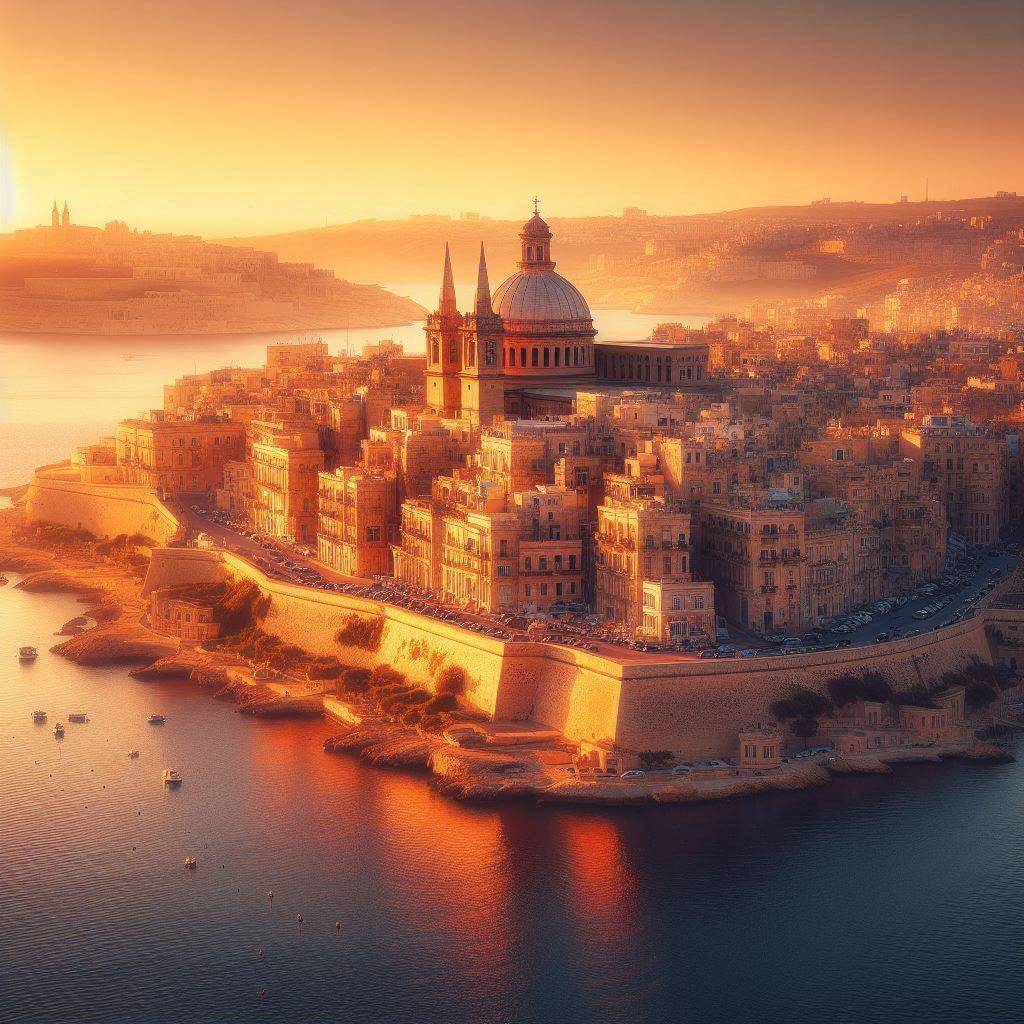The flag of Malta features a distinctive design consisting of two equal vertical stripes, white on the hoist side and red on the fly side, with a representation of the George Cross depicted in grey in the upper hoist-side corner of the white stripe. This unique flag embodies Malta's rich history, valor, and cultural heritage.
Malta information
| National Flag Day | — |
| Sovereign state | Yes |
| Official name | Republic of Malta |
| Capital | Valletta |
| Population | 475,701 |
| Area | 316 km² |
| Currency | Euro (€) - EUR |
| Language | Maltese, English |
| Continent | Europe |
| Region | Southern Europe |
| Subregion | — |
| Borders | — |
| Timezone | Central European Time (CET) UTC+1 |
| Calling code | +356 |
| Top-level domain | .mt |
History of the Maltese Flag
 The current Maltese flag was officially adopted on September 21, 1964, when Malta gained independence from the United Kingdom. However, the flag's history dates back much further. The white and red colors have been associated with Malta since at least 1091, reportedly originating from the checkered banner of Count Roger of Sicily. The George Cross was added to the flag in 1942, after King George VI awarded the entire island of Malta the George Cross for its bravery during World War II, making it the only country to bear this honor on its national flag.
The current Maltese flag was officially adopted on September 21, 1964, when Malta gained independence from the United Kingdom. However, the flag's history dates back much further. The white and red colors have been associated with Malta since at least 1091, reportedly originating from the checkered banner of Count Roger of Sicily. The George Cross was added to the flag in 1942, after King George VI awarded the entire island of Malta the George Cross for its bravery during World War II, making it the only country to bear this honor on its national flag.
Symbolism and Design of the Maltese Flag
The Maltese flag is rich in symbolism. The white stripe represents purity, peace, and unity among the Maltese people. The red stripe symbolizes the blood shed by Maltese patriots throughout the country's long and often turbulent history. It also represents the vibrant spirit and resilience of the Maltese nation. The George Cross, positioned in the upper left corner, is a powerful reminder of Malta's courage and sacrifice during World War II. The island endured intense bombing and a naval blockade but never surrendered, earning it the collective award for gallantry.
Usage and Significance of the Maltese Flag
 The Maltese flag is a source of immense national pride and is widely displayed throughout the country. It flies prominently on government buildings, schools, and public institutions. During national holidays such as Independence Day (September 21), Republic Day (December 13), and Freedom Day (March 31), the flag takes center stage in celebrations and parades. The flag is also an important symbol in Malta's thriving tourism industry, often seen flying at historical sites and on traditional Maltese boats. In international contexts, the flag represents Malta's sovereignty and unique identity within the European Union and the global community.
The Maltese flag is a source of immense national pride and is widely displayed throughout the country. It flies prominently on government buildings, schools, and public institutions. During national holidays such as Independence Day (September 21), Republic Day (December 13), and Freedom Day (March 31), the flag takes center stage in celebrations and parades. The flag is also an important symbol in Malta's thriving tourism industry, often seen flying at historical sites and on traditional Maltese boats. In international contexts, the flag represents Malta's sovereignty and unique identity within the European Union and the global community.
Interesting Facts About the Maltese Flag
- Malta is the only country in the world to have been collectively awarded the George Cross, which is reflected on its national flag.
- The exact shade of red used in the Maltese flag is defined as Pantone 186c, ensuring consistency in all official representations.
- Prior to 1943, the Maltese flag featured the British Union Jack in the canton instead of the George Cross.
- The flag's design has sparked occasional controversy, with some Maltese politicians proposing to remove the George Cross to create a more distinctively Maltese symbol.
- In naval contexts, Malta uses a red ensign for civil vessels and a white ensign for naval vessels, both incorporating elements of the national flag.